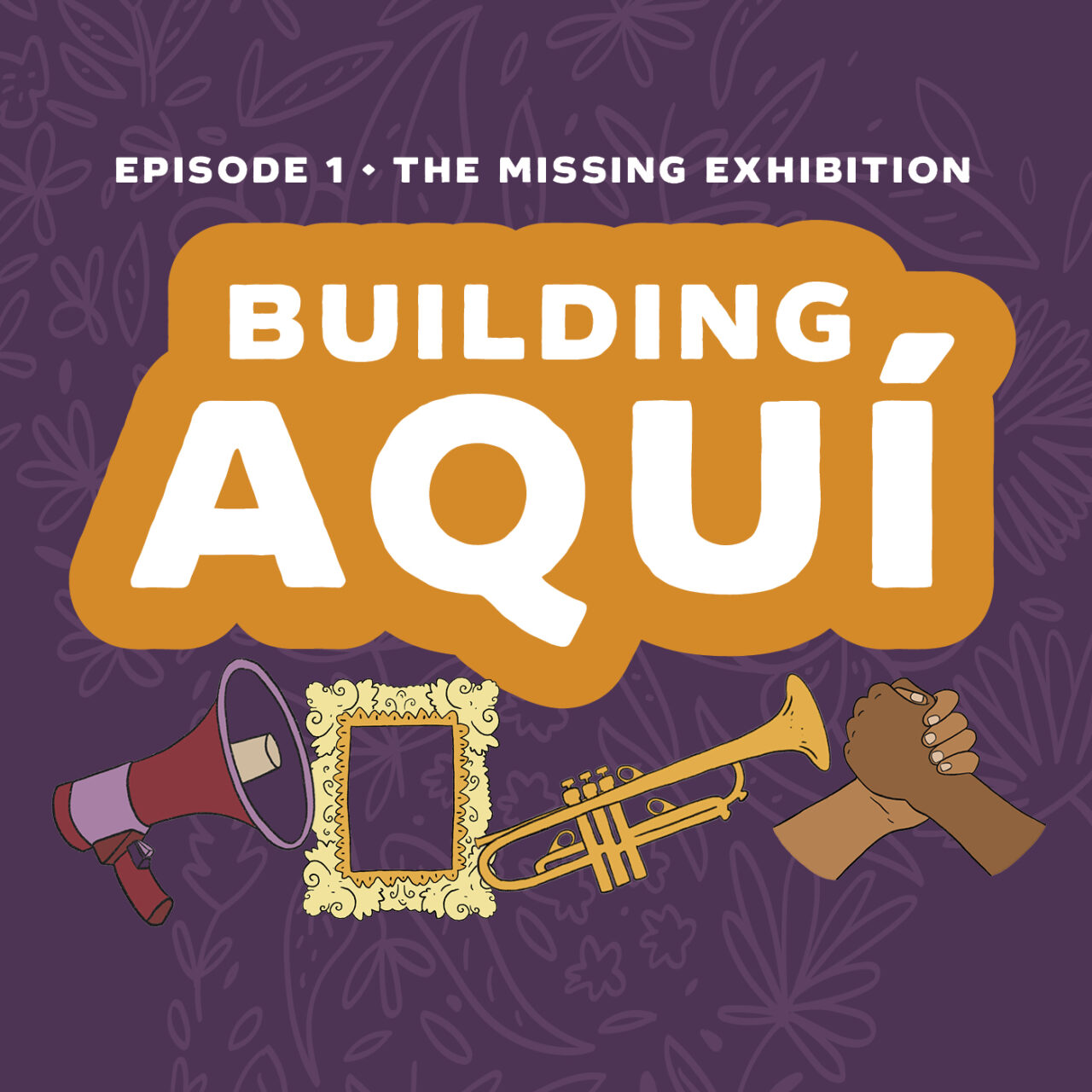The Missing Exhibition: Building Aquí
Behind the Scenes of the “Aquí en Chicago” Exhibition

When students at a predominantly Latino/a/e alternative high school in Chicago (Instituto Justice and Leadership Academy) realized that Chicago’s major history museum had no information about the Latino/a/e third of the city in its permanent exhibition, they took a stand—and made history. The Missing Exhibition: Building Aquí is a 4-part podcast that follows the students’ protest, the exhibition it inspired, and the long, rich legacy of Latine resistance, migration, and culture in the city. Told through music, oral history, and the sounds of Chicago, the series features the work of legendary Chicano folklorist Chuy Negrete and the voices of curators, activists, and community members working to expand the archive.
From the Puerto Rican Young Lords’ transformation from street gang to political force fighting “urban renewal” and displacement in Lincoln Park, to Mexican American students pushing for bilingual education, and beyond—this podcast explores the profound ways Latino/a/e Chicagoans have shaped the city and why this important history is still missing from many institutions that should be preserving it.
Listen on Spotify Listen on Apple PodcastsProduced by Rivet360’s Jesse Betend in partnership with the Chicago History Museum.
Episode 1: The Missing Exhibition
When students from an alternative high school confront the Chicago History Museum over its lack of Latino/a/e representation, they set off a chain of events that leads to a historic new exhibition—and a reckoning with the past.
This episode also traces the life and legacy of Rudy Lozano, the activist whose name the students carry, and legendary folk artist Jesus “Chuy” Negrete, whose corridos have preserved history and honored the lives of countless Latine Chicagoans. What does it say about the power of this medium when it is weaponized by the U.S. Border Patrol’s production of Migra Corridos to deter migrants?

Episode 2: Sound & Faith: Echoes of Defiance and Refuge in a Sanctuary City
For more than forty years, Chicago has called itself a Sanctuary City—but what does that promise really mean?
Through the stories of Adriana Portillo-Bartow, a Guatemalan mother fleeing military terror in the 1980s; and Elvira Arellano, whose stand inside a Humboldt Park church after 9/11 reignited a national movement; Chicago History Museum curator Rebekah Coffman reflects on three distinct waves of the city’s historic promise. This episode traces how a moral idea became a political battleground, and what it means now that the United States may have entered a new era where even traditional sanctuaries are no longer safe.
